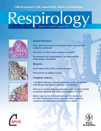Sustained effects of thoracocentesis on oxygenation in mechanically ventilated patients
ABSTRACT
Background and objective: No consensus exists as to the benefit of pleural drainage in mechanically ventilated patients with conflicting data concerning the effects on gas exchange. We determined the effects on gas exchange over a 48-hour period of draining, by thoracocentesis, large volume pleural effusions.
Methods: A total of 15 thoracocenteses were performed in 10 mechanically ventilated patients with ultrasound evidence of pleural effusions predicted to be greater than 800 mL in volume. Gas exchange, mixed expired CO2, dynamic lung compliance, ventilator settings before procedure and at 30 min, 4, 8, 24 and 48 h were determined. Data were analysed using paired t-tests and repeated-measure anova.
Results: Following thoracocentesis there was a 40% increase in the PaO2 from 82.0 ± 10.6 mm Hg to 115.2 ± 31.1 mm Hg (P < 0.05) with a 34% increase in the P:F ratio from 168.9 ± 55.9 mm Hg to 237.8 ± 72.6 mm Hg (P < 0.05). These effects were maintained for a period of 48 h. There was a correlation between the amount of fluid drained and the effects on oxygenation with an increase in the PaO2 of 4 mm Hg for each 100 mL of pleural fluid drained. A-a gradients continued to improve over the course of the study together with a reduction in the dead space fraction and improved dynamic compliance.
Conclusions: Drainage of large pleural effusions in mechanically ventilated patients leads to a significant improvement in gas exchange, and these effects are sustained for 48 h after the procedure supporting a role in the discontinuation of mechanical ventilation.




